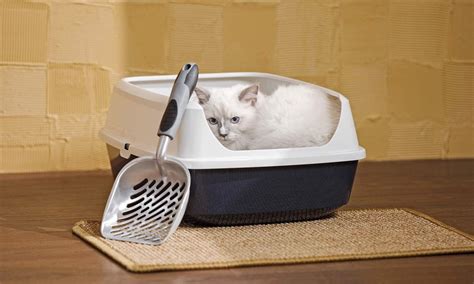Introduction
Litter box training is a crucial aspect of responsible cat ownership. It ensures a clean and healthy environment for both cats and their owners. However, it can be a challenging task, especially for first-time cat parents. This article provides a comprehensive guide on how to effectively train cats to use the litter box in 2025 and beyond.

Comparison: Traditional VS Modern Litter Box Techniques
Traditional Techniques
- Basic Litter Box: A simple box filled with litter, typically placed in a secluded area.
- Advantages: Low cost, easy to maintain.
- Disadvantages: Can be messy, might not attract all cats.
Modern Techniques
- Automatic Litter Box: A self-cleaning box that automatically removes waste and replenishes litter.
- Advantages: Hands-free convenience, keeps litter clean.
- Disadvantages: Higher cost, may require regular maintenance.
Step-by-Step Litter Box Training Approach
1. Choosing the Right Litter Box:
- Select a box that is large enough for the cat to stand up and turn around in.
- Place it in a quiet, secluded location away from food and water bowls.
2. Introducing the Cat to the Litter Box:
- Place the cat in the litter box several times a day, especially after meals and naps.
- Encourage the cat to explore and sniff the litter.
- If the cat refuses to enter the box, try distracting it with toys or treats.
3. Positive Reinforcement:
- When the cat uses the litter box, immediately reward it with praise, treats, or playtime.
- This will help the cat associate using the box with positive experiences.
4. Patience and Consistency:
- Litter box training takes time and consistency.
- If the cat has accidents, don’t punish it. Instead, clean up the mess and gently guide it back to the litter box.
- Avoid changing the type or location of the litter box too often.
5. Common Mistakes to Avoid:
- Dirty Litter Box: Cats prefer a clean litter box. Scoop out waste daily and replace the litter regularly.
- Inappropriate Location: The box should be in a secluded, quiet area. Avoid placing it near noisy appliances or high-traffic areas.
- Wrong Litter Type: Different cats have different preferences. Experiment with various types of litter to find one that the cat likes.
- Punishing the Cat: Punishment is ineffective and can damage the bond between the cat and owner.
- Ignoring the Cat’s Needs: Pay attention to the cat’s elimination habits. If it starts eliminating outside the box, consider consulting a veterinarian to rule out any underlying medical issues.
Why Litter Box Training Matters
- Hygiene: A clean litter box promotes a healthy environment for both cats and owners.
- Convenience: Litter box training makes it easier to care for a cat and maintain a clean home.
- Behavioral Issues: Cats that are not properly litter box trained may exhibit inappropriate elimination behaviors, such as spraying or urinating in undesirable areas.
- Health and Well-being: A litter box can help cats feel safe and comfortable in their surroundings.
- Bonding: Litter box training can strengthen the bond between cats and their owners by providing them with a designated space for elimination.
Future Trends in Litter Box Training
- Smart Litter Boxes: Litter boxes that monitor the cat’s weight, urination frequency, and litter usage.
- Biodegradable Litter: Litter made from environmentally friendly materials, such as plant-based fibers or recycled paper.
- Litter Box Robots: Automated devices that remove waste, replenish litter, and disinfect the box.
- Personalized Litter Boxes: Litter boxes designed to accommodate the specific needs of different cats, such as geriatric cats or cats with disabilities.
Conclusion
Litter box training is an essential aspect of cat ownership. By following the step-by-step approach outlined in this guide, you can effectively train your cat to use the litter box and maintain a clean and healthy environment. Remember to be patient, consistent, and avoid common mistakes. As technology advances, new and innovative litter box solutions will emerge, making it easier for cat owners to provide their feline companions with a comfortable and hygienic elimination space.





















